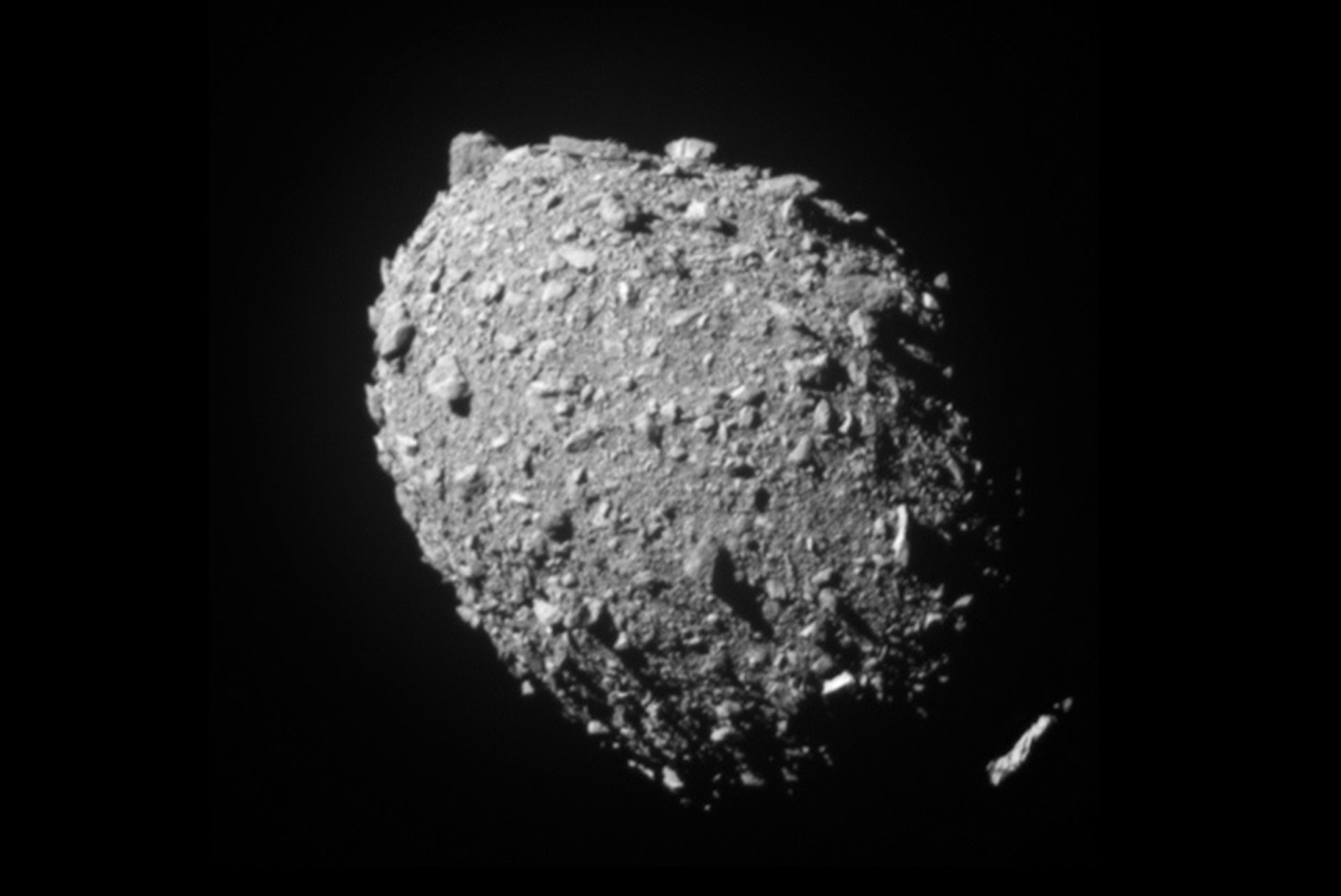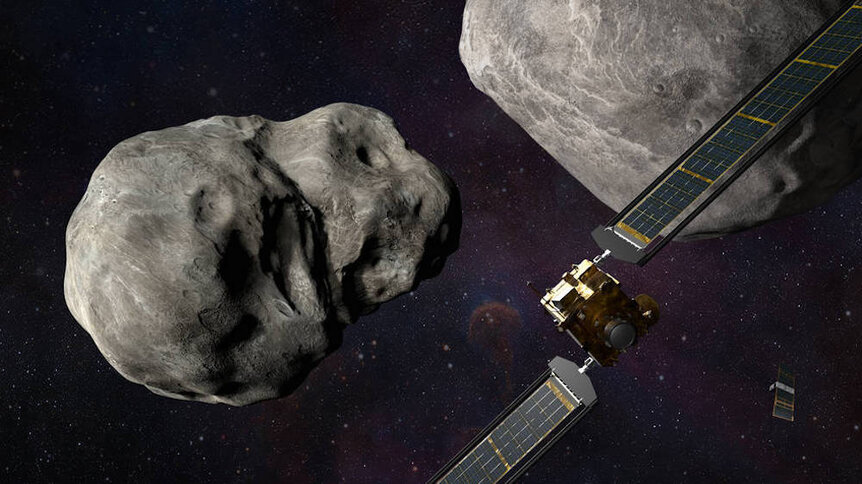Create a free profile to get unlimited access to exclusive videos, sweepstakes, and more!
Boom! DART changed the orbit of asteroid Dimorphos even more than we'd hoped
Apparently DART didn't know its own strength.

Ever since we learned that an asteroid sucker punched the dinosaurs 66 million years ago, we’ve been a little bit worried it might happen again, but with us in the crosshairs. Countless movies, both blockbuster and bargain bin, have explored the question of how humanity might react in the face of our imminent demise at the hands of a cosmic object. In movies like Armageddon and Don’t Look Up, we send spacecraft in hope of destroying the asteroid before it makes planetfall. In Seeking a Friend for the End of the World, there isn’t really any hope, save for the relationships we make before the end.
For a long time, all of human history in fact, we would have found ourselves in the latter kind of story. As recently as a few centuries ago, we wouldn’t have even known something was coming until it appeared in the sky, visible to the naked eye. Beginning in 1608, the telescope broadened our exploratory range and our advance warning. We could see further into the cosmos, but still lacked any way of doing something about what we found. Only in the last century, with the advent of rocketry, did we finally gain the ability lift ourselves and our machines out of Earth’s gravity pit.
RELATED: Tonight, NASA's DART will slam into an asteroid at 24,000 kph
From then on, if something did show up, we could at least meet it at the front door. We had entered into the other kind of story. There’s a quote, attributed to Larry Niven — author of the Ringworld books — which says, “The dinosaurs went extinct because they didn’t have a space program. And if we become extinct because we don’t have a space program, it’ll serve us right!”
Well, we do have a space program and it was only a matter of time before we picked a fight with a rock just to see what would happen. That was the purpose of NASA's DART — Double Asteroid Redirection Test — mission which smashed into the asteroid moon Dimorphos on Sept. 26 of this year.
It was the culmination of an almost year-long, 11-million-mile journey through space, ending with the tiny craft smashing into the asteroid moon Dimorphos at approximately 24,000 kilometers per hour. The goal was to find out if we could effectively change the orbit of an impactor. If so, we might be able to prevent our own extinction by smashing spacecraft into a killer asteroid in the future. We knew by the evening of Sept. 26 that the first part of the mission had been a success. Video from the craft itself as well as ground-based observations confirmed that DART found its mark and crashed into Dimorphos. What we didn’t know at the time was whether Dimorphos had been moved, and if so, by how much.
In the two weeks since the DART spacecraft was vaporized into a few hundred kilograms worth of space dust, Earthbound astronomers have been diligently watching Dimorphos and its big sister Didymos for any apparent changes. The trick to this whole endeavor is that Dimorphos is orbiting a comparatively larger asteroid. Choosing a binary object like this makes it easier for us to measure changes in orbit. Instead of measuring the orbit of one object around the Sun, we can measure the orbit of Dimorphos around Didymos. That’s quite a bit easier.
Based on the speed and mass of the DART spacecraft, astronomers were expecting the kinetic energy of collision to reduce Dimorphos’ orbit by about 10 minutes. Seeing that amount of change would have been a success, but DART did so much better. Today, NASA announced the results of the impact, and they were more pronounced than we expected. Prior to the mission, Dimorphos took 11 hours and 55 minutes to orbit its parent. After the collision the orbit had been reduced to 11 hours and 23 minutes, a full 32 minutes fewer than before. It also pushed Dimorphos tens of meters closer to Didymos than it was before.
The success of DART is a good sign and points toward the possible ability of nudging potential planet killers out of the way, but quite a bit more work is needed before we can all but erase asteroid impacts from our list of threats. That’s because not all objects are the same. Some are icy, some have more metal, others are actually a collection of clustered objects. Different types of objects might react differently to a spacecraft gut punch. Still, this is the first time humanity has ever intentionally altered the orbit of a celestial object and proof of concept that we could in fact mount a defense if and when an asteroid comes calling. We just need a few more sparring sessions before we’ll be confident about the big fight.



























